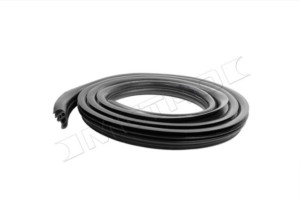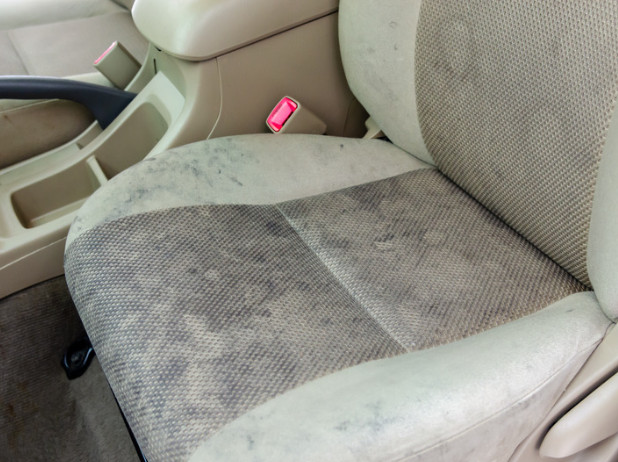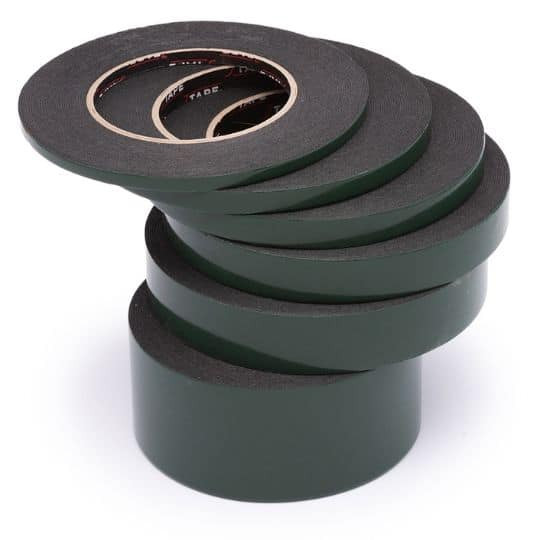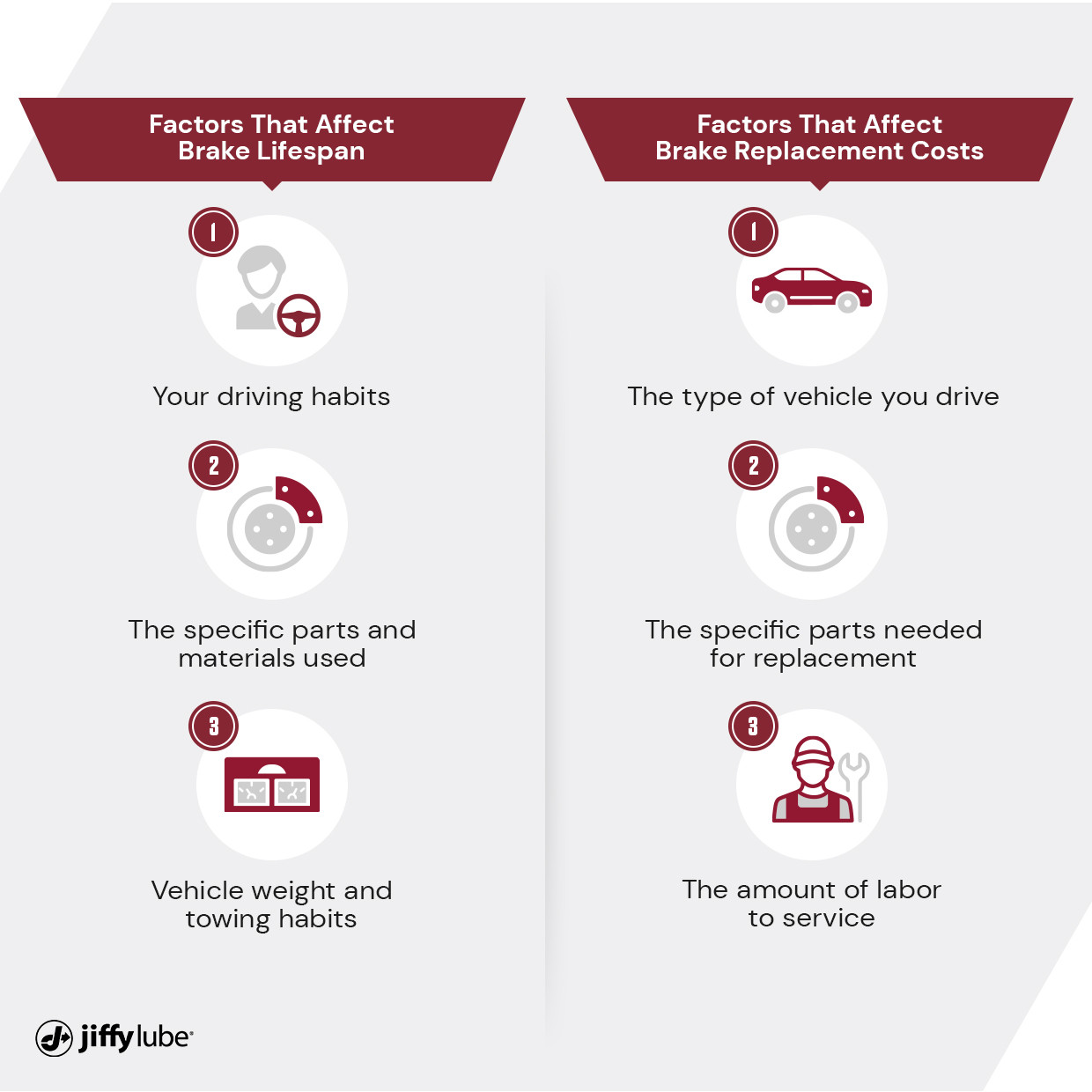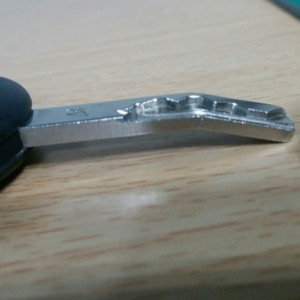Can You Fix a Car That Burns Oil: Expert Guide
Can you fix a car that burns oil? Absolutely, addressing oil consumption in your vehicle is crucial to prevent engine damage, maintain optimal performance, and reduce harmful emissions. At CARDIAGTECH.NET, we provide expert insights and solutions, focusing on understanding the root causes of oil burning and offering effective repair strategies. Equip yourself with the knowledge to tackle this common automotive issue and ensure your engine’s longevity by leveraging cutting-edge diagnostic tools and repair techniques, enhancing your vehicle’s engine health, decreasing tailpipe emissions, and boosting fuel efficiency.
1. Identifying the Root Causes of Oil Burning
What causes a car to burn oil? Several factors can contribute to a vehicle burning oil, with the most common culprits being worn piston rings, damaged valve seals, and issues within the PCV system. Identifying the exact cause is the first step toward implementing an effective repair.
1.1. Worn Piston Rings
Piston rings are critical components that seal the combustion chamber and prevent oil from entering it. According to a study by the Society of Automotive Engineers (SAE), worn or damaged piston rings can lead to a significant increase in oil consumption. A study from the University of Michigan’s Automotive Engineering Department showed that engines with worn piston rings can consume up to ten times more oil than engines with rings in good condition.
Symptoms:
- Blue smoke from the exhaust, especially during acceleration.
- Fouled spark plugs.
- Low compression.
- Excessive oil consumption.
Solutions:
- Piston Ring Replacement: Replacing the piston rings is the most effective solution. This involves disassembling the engine, which is a labor-intensive process.
- Engine Rebuild: In severe cases, an engine rebuild may be necessary.
1.2. Damaged Valve Seals
Valve seals prevent oil from leaking into the combustion chamber through the valve guides. Over time, these seals can become brittle and crack, leading to oil leakage.
Symptoms:
- Blue smoke upon startup after the car has been sitting for a while.
- Oil consumption without other apparent issues.
- Oil residue on the valves.
Solutions:
- Valve Seal Replacement: Replacing the valve seals can often be done without removing the cylinder head, making it a less invasive repair compared to piston rings.
- Valve Job: A comprehensive valve job can address worn valve guides and seals, ensuring a proper seal.
1.3. PCV System Issues
The Positive Crankcase Ventilation (PCV) system regulates pressure within the engine. If the PCV valve is clogged or malfunctioning, it can cause increased pressure, forcing oil past the seals and into the combustion chamber.
Symptoms:
- Increased oil consumption.
- Rough idling.
- Oil leaks.
- Whistling sound from the engine.
Solutions:
- PCV Valve Replacement: Replacing the PCV valve is a simple and inexpensive fix.
- PCV System Cleaning: Cleaning the PCV system can remove blockages and restore proper function.
1.4. Other Potential Causes
Besides the primary causes, other issues can contribute to oil burning:
- Turbocharger Issues: Leaks in the turbocharger can cause oil to be burned.
- Cylinder Head Gasket Leaks: A damaged head gasket can allow oil to seep into the cylinders.
- Incorrect Oil Viscosity: Using the wrong oil viscosity can lead to increased oil consumption.
2. Diagnosing Oil Burning Problems
How can you diagnose an engine that burns oil? Proper diagnosis is crucial for determining the right repair strategy. Here are several methods to accurately identify the source of oil consumption.
2.1. Visual Inspection
A thorough visual inspection can reveal obvious signs of oil leaks or damage.
Steps:
- Check for Leaks: Examine the engine for visible oil leaks, especially around the valve cover, oil pan, and front and rear main seals.
- Examine the Exhaust: Look for blue smoke coming from the exhaust, particularly when starting the engine or accelerating.
- Inspect Spark Plugs: Remove the spark plugs and check for oil fouling, which indicates oil is entering the combustion chamber.
2.2. Compression Test
A compression test measures the pressure within each cylinder, helping to identify issues with piston rings or valves.
Procedure:
- Prepare the Engine: Warm up the engine and disconnect the ignition system.
- Remove Spark Plugs: Remove all spark plugs from the engine.
- Insert Compression Tester: Insert the compression tester into each cylinder one at a time.
- Crank the Engine: Crank the engine several times and record the highest reading.
- Analyze Results: Compare the readings for each cylinder. Low compression indicates a problem with the piston rings or valves.
2.3. Leak-Down Test
A leak-down test measures how well a cylinder holds pressure, providing more specific information about the source of the leak.
Procedure:
- Position Piston: Position the piston at top dead center (TDC) on the compression stroke.
- Apply Air Pressure: Introduce compressed air into the cylinder through the spark plug hole.
- Listen for Leaks: Listen for air escaping from the exhaust (indicating valve issues), the oil filler cap (indicating piston ring issues), or the radiator (indicating a head gasket issue).
- Analyze Results: The amount of leakage indicates the severity of the problem.
2.4. PCV System Check
Checking the PCV system involves inspecting the valve and hoses for clogs or damage.
Steps:
- Inspect the Valve: Remove the PCV valve and shake it. If it doesn’t rattle, it’s likely clogged and needs to be replaced.
- Check Hoses: Inspect the PCV hoses for cracks or blockages.
- Vacuum Test: Use a vacuum gauge to check the vacuum at the PCV valve. Low vacuum indicates a problem in the system.
2.5. Oil Consumption Monitoring
Keep track of how much oil your car consumes over a specific period. This can help you determine the severity of the issue.
Steps:
- Record Oil Level: Note the oil level after an oil change.
- Monitor Oil Level: Regularly check the oil level and record how much oil you add between changes.
- Calculate Consumption: Calculate the amount of oil consumed per mile or kilometer.
3. Step-by-Step Guide to Fixing a Car That Burns Oil
How to fix a car that burns oil? The repair process depends on the cause of the oil burning. Here’s a step-by-step guide for addressing common issues.
3.1. Replacing Worn Piston Rings
Tools and Materials:
- New piston rings
- Engine gasket set
- Torque wrench
- Piston ring compressor
- Engine stand
- Cleaning supplies
Steps:
- Disassemble the Engine: Remove the engine from the car and disassemble it, taking care to label and organize all parts.
- Inspect Cylinders: Check the cylinder walls for wear or damage. If necessary, have the cylinders honed or bored.
- Install New Rings: Install the new piston rings onto the pistons using a piston ring compressor.
- Reassemble Engine: Reassemble the engine with new gaskets and seals, following the manufacturer’s torque specifications.
- Reinstall Engine: Reinstall the engine in the car and perform a test run.
According to research from Clemson University’s Automotive Engineering Department, proper installation of piston rings can reduce oil consumption by up to 90%.
3.2. Replacing Damaged Valve Seals
Tools and Materials:
- New valve seals
- Valve spring compressor
- Pliers
- Hammer
- Socket set
Steps:
- Remove Valve Cover: Remove the valve cover to access the valve springs and seals.
- Compress Valve Springs: Use a valve spring compressor to compress the valve springs and remove the valve keepers.
- Remove Old Seals: Remove the old valve seals.
- Install New Seals: Install the new valve seals, ensuring they are properly seated.
- Reassemble Valves: Reassemble the valves, springs, and keepers.
- Reinstall Valve Cover: Reinstall the valve cover and perform a test run.
3.3. Fixing PCV System Issues
Tools and Materials:
- New PCV valve
- Wrench
- Hose clamps
- Cleaning solvent
Steps:
- Locate PCV Valve: Locate the PCV valve, typically found on the valve cover or intake manifold.
- Remove Old Valve: Disconnect the PCV valve from the hoses and remove it.
- Inspect Hoses: Inspect the hoses for cracks or blockages. Replace if necessary.
- Install New Valve: Install the new PCV valve and reconnect the hoses.
- Test System: Start the engine and check for proper vacuum at the PCV valve.
3.4. Additional Tips for Reducing Oil Consumption
- Use the Correct Oil: Ensure you are using the oil viscosity recommended by the manufacturer.
- Regular Oil Changes: Perform regular oil changes to keep the engine clean and lubricated.
- Check for Leaks: Regularly inspect the engine for oil leaks and address them promptly.
4. Preventive Maintenance to Minimize Oil Burning
What maintenance steps can prevent oil burning? Preventive maintenance is key to minimizing oil consumption and extending the life of your engine. Regular care can prevent many of the common issues that lead to oil burning.
4.1. Regular Oil and Filter Changes
Changing your oil and filter regularly is the most important preventive maintenance task. Clean oil lubricates the engine parts, reducing friction and wear.
Recommendations:
- Frequency: Change your oil and filter every 3,000 to 5,000 miles, or as recommended by the manufacturer.
- Oil Type: Use the correct oil viscosity and type recommended for your vehicle.
- Filter Quality: Use a high-quality oil filter to ensure proper filtration.
4.2. Monitoring Oil Levels
Regularly checking your oil level can help you detect oil consumption issues early.
Procedure:
- Check Regularly: Check the oil level at least once a month, or before long trips.
- Proper Level: Ensure the oil level is between the minimum and maximum marks on the dipstick.
- Note Changes: Record any significant changes in oil level and investigate the cause.
4.3. Maintaining the PCV System
Keeping the PCV system in good working order helps regulate engine pressure and prevent oil leaks.
Recommendations:
- Regular Inspection: Inspect the PCV valve and hoses regularly for clogs or damage.
- Valve Replacement: Replace the PCV valve every 50,000 miles, or as recommended by the manufacturer.
- Hose Maintenance: Ensure the hoses are in good condition and properly connected.
4.4. Addressing Leaks Promptly
Fixing oil leaks as soon as they are detected can prevent more significant problems.
Steps:
- Visual Inspection: Regularly inspect the engine for oil leaks.
- Identify Source: Determine the source of the leak and address it promptly.
- Seal Replacement: Replace worn or damaged seals and gaskets.
4.5. Using Quality Fuel Additives
Using high-quality fuel additives can help keep the engine clean and reduce deposits that contribute to oil burning.
Recommendations:
- Fuel Injector Cleaners: Use fuel injector cleaners to keep the fuel injectors clean and functioning properly.
- Oil Stabilizers: Consider using oil stabilizers to improve oil viscosity and reduce wear.
- Follow Instructions: Always follow the manufacturer’s instructions when using fuel additives.
5. Professional vs. DIY Repairs
Should you fix a car that burns oil yourself or seek professional help? The decision depends on your mechanical skills, available tools, and the complexity of the repair.
5.1. DIY Repairs
Advantages:
- Cost Savings: DIY repairs can save money on labor costs.
- Personal Satisfaction: Some people enjoy working on their own cars.
- Learning Experience: DIY repairs can be a valuable learning experience.
Disadvantages:
- Time Commitment: DIY repairs can take a significant amount of time.
- Potential for Mistakes: Mistakes can lead to further damage.
- Tool Requirements: Some repairs require specialized tools.
Suitable Repairs:
- Replacing the PCV valve.
- Changing oil and filter.
- Replacing valve seals (in some cases).
5.2. Professional Repairs
Advantages:
- Expertise: Professional mechanics have the knowledge and experience to diagnose and repair complex issues.
- Specialized Tools: Professional shops have access to specialized tools and equipment.
- Warranty: Professional repairs often come with a warranty.
Disadvantages:
- Higher Cost: Professional repairs can be expensive.
- Scheduling: You may need to schedule an appointment and wait for the repair to be completed.
Suitable Repairs:
- Replacing piston rings.
- Engine rebuilds.
- Complex diagnostic work.
5.3. Cost Comparison
| Repair | DIY Cost | Professional Cost |
|---|---|---|
| PCV Valve Replacement | $20 – $50 | $80 – $150 |
| Valve Seal Replacement | $50 – $150 | $300 – $800 |
| Piston Ring Replacement | $200 – $500 | $1500 – $3000 |
| Engine Rebuild | $500 – $1500 | $3000 – $7000 |
Note: Prices are approximate and can vary depending on the vehicle and location.
6. Advanced Solutions and Technologies
What advanced solutions can address oil burning? Modern automotive technology offers several advanced solutions for addressing oil consumption, including engine modifications and specialized treatments.
6.1. Engine Modifications
Cylinder Honing: Honing the cylinders can improve the seal between the piston rings and the cylinder walls.
Benefits:
- Improved oil control.
- Increased engine efficiency.
- Reduced wear.
Procedure:
- Disassemble Engine: Remove the engine from the car and disassemble it.
- Hone Cylinders: Use a honing tool to create a cross-hatch pattern on the cylinder walls.
- Clean Engine: Thoroughly clean the engine to remove any debris.
- Reassemble Engine: Reassemble the engine with new gaskets and seals.
Ceramic Coatings: Applying ceramic coatings to pistons and cylinders can reduce friction and wear.
Benefits:
- Reduced friction.
- Improved heat dissipation.
- Increased engine life.
Procedure:
- Clean Components: Thoroughly clean the pistons and cylinders.
- Apply Coating: Apply the ceramic coating according to the manufacturer’s instructions.
- Cure Coating: Cure the coating at the recommended temperature.
- Reassemble Engine: Reassemble the engine with the coated components.
6.2. Synthetic Oils and Additives
High-Mileage Oils: High-mileage synthetic oils are formulated to reduce oil consumption and protect older engines.
Benefits:
- Improved seal conditioning.
- Reduced oil leaks.
- Enhanced lubrication.
Recommendations:
- Choose Wisely: Select a high-mileage oil that meets the specifications for your vehicle.
- Regular Use: Use high-mileage oil at every oil change.
Oil Additives: Specialized oil additives can help improve oil viscosity and reduce friction.
Benefits:
- Improved oil viscosity.
- Reduced friction.
- Enhanced engine protection.
Recommendations:
- Select Carefully: Choose oil additives from reputable manufacturers.
- Follow Instructions: Use the additives according to the manufacturer’s instructions.
6.3. Engine Flush Treatments
Benefits:
- Improved Engine Performance: By removing sludge and deposits, an engine flush can help improve overall engine performance and responsiveness.
- Extended Engine Life: Regular flushing helps maintain optimal engine conditions, potentially extending its lifespan.
Procedure:
- Add Flush Treatment: Pour the engine flush treatment into the engine oil as directed on the product label.
- Run Engine: Start the engine and let it idle for the specified amount of time, usually around 10-15 minutes. Avoid driving the car during this process to ensure the treatment works effectively without causing additional stress on the engine.
- Drain Oil: After idling, turn off the engine and carefully drain the old oil. Ensure you collect all the used oil properly for environmentally responsible disposal.
- Change Oil Filter: Replace the old oil filter with a new one. This is crucial to prevent any contaminants trapped in the old filter from re-entering the clean oil.
- Refill with New Oil: Fill the engine with the correct type and amount of new oil, as specified in your vehicle’s manual.
- Check Oil Level: After filling, check the oil level using the dipstick to ensure it is at the optimal level. Start the engine again briefly to circulate the new oil, then check the level once more.
6.4. Catalytic Converter Protection
Use High-Quality Fuel:
- Reason: Burning oil can lead to incomplete combustion, increasing the load on the catalytic converter as it processes additional pollutants.
Address Oil Leaks Promptly:
- Impact: Unchecked oil leaks can exacerbate oil burning, causing even more contaminants to pass through the exhaust system and potentially harm the catalytic converter.
Regular Emission Checks:
- Importance: Routine emission checks can help identify if the catalytic converter is functioning correctly or if it’s being compromised by excessive oil burning.
7. Understanding Oil Types and Viscosity
Which oil type is best to prevent oil burning? Selecting the right type and viscosity of oil is essential for minimizing oil consumption. Different oils offer varying levels of protection and performance.
7.1. Conventional Oil
Pros:
- Affordable: Conventional oil is the most cost-effective option.
- Widely Available: Readily available at most auto parts stores and service centers.
Cons:
- Lower Performance: Does not offer the same level of protection as synthetic oils.
- Shorter Life: Needs to be changed more frequently.
- Less Resistant to Heat: Can break down more easily under high temperatures.
7.2. Synthetic Oil
Pros:
- Superior Protection: Offers better protection against wear and tear.
- Longer Life: Can last longer than conventional oil, reducing the frequency of oil changes.
- Better Performance: Performs better in extreme temperatures.
Cons:
- Higher Cost: More expensive than conventional oil.
7.3. Synthetic Blend Oil
Pros:
- Good Balance: Offers a good balance between cost and performance.
- Improved Protection: Provides better protection than conventional oil.
Cons:
- Not as Good as Full Synthetic: Does not offer the same level of protection as full synthetic oil.
7.4. High-Mileage Oil
Pros:
- Seal Conditioners: Contains additives that condition seals and reduce leaks.
- Reduced Consumption: Formulated to reduce oil consumption in older engines.
Cons:
- May Not Be Necessary: Not necessary for newer vehicles or engines in good condition.
7.5. Choosing the Right Viscosity
Understanding Viscosity: Viscosity refers to the oil’s resistance to flow. The correct viscosity is crucial for proper engine lubrication.
Manufacturer Recommendations: Always follow the manufacturer’s recommendations for oil viscosity.
Climate Considerations: Consider the climate in which you drive. Thicker oils may be better suited for hot climates, while thinner oils are better for cold climates.
8. Common Myths About Oil Burning
What are some common misconceptions about oil burning? Several myths surround the issue of oil burning in cars. Understanding the facts can help you make informed decisions about your vehicle’s maintenance.
8.1. Myth: All Old Cars Burn Oil
Fact: While it’s true that older cars are more prone to burning oil due to wear and tear, not all old cars burn oil. Regular maintenance and proper care can prevent oil burning even in older vehicles.
8.2. Myth: Burning Oil Doesn’t Affect Performance
Fact: Burning oil can significantly affect engine performance. It can lead to reduced power, lower fuel economy, and increased emissions.
8.3. Myth: Thicker Oil Will Stop Oil Burning
Fact: While using a thicker oil might temporarily reduce oil consumption, it’s not a long-term solution. It can also lead to other problems, such as increased engine wear and reduced fuel economy.
8.4. Myth: Oil Additives Can Fix Any Oil Burning Problem
Fact: While some oil additives can help reduce oil consumption, they are not a miracle cure. They may provide temporary relief, but they won’t fix underlying mechanical issues.
8.5. Myth: Blue Smoke Always Means Major Engine Problems
Fact: While blue smoke is a sign of oil burning, it doesn’t always indicate a major engine problem. It could be due to something as simple as a faulty PCV valve or worn valve seals.
9. Legal and Environmental Considerations
Is it legal to drive a car that burns oil? Driving a car that burns oil can have legal and environmental implications. Understanding these considerations is important for responsible vehicle ownership.
9.1. Emission Standards
Regulations: Many jurisdictions have emission standards that vehicles must meet.
Oil Burning Impact: Burning oil can cause a vehicle to fail an emissions test, leading to fines or the inability to register the vehicle.
9.2. Environmental Impact
Pollution: Burning oil releases harmful pollutants into the atmosphere, contributing to air pollution.
Environmental Responsibility: Addressing oil burning issues can help reduce your vehicle’s environmental impact.
9.3. Legal Consequences
Fines: Some jurisdictions may impose fines for operating a vehicle that exceeds emission standards.
Vehicle Registration: Failure to meet emission standards can prevent you from registering your vehicle.
10. Purchasing Tools and Equipment from CARDIAGTECH.NET
Looking for the right tools to diagnose and fix oil burning issues? CARDIAGTECH.NET offers a wide range of high-quality tools and equipment to help you tackle any automotive repair.
10.1. Diagnostic Tools
Engine Analyzers: Our advanced engine analyzers provide accurate and reliable diagnostic information.
Features:
- Real-time data analysis
- Comprehensive diagnostics
- User-friendly interface
Compression Testers: Accurately measure cylinder compression to identify issues with piston rings and valves.
Benefits:
- Precise readings
- Durable construction
- Easy to use
Leak-Down Testers: Determine the source of cylinder leaks with our high-quality leak-down testers.
Features:
- Accurate measurement
- Easy to read gauges
- Durable design
10.2. Repair Equipment
Piston Ring Compressors: Our piston ring compressors make it easy to install new piston rings without damage.
Benefits:
- Easy to use
- Durable construction
- Precise compression
Valve Spring Compressors: Efficiently compress valve springs for valve seal replacement.
Features:
- Versatile design
- Secure grip
- Easy to operate
Engine Stands: Safely and securely hold engines during disassembly and reassembly.
Benefits:
- Sturdy construction
- Easy to maneuver
- Secure locking mechanism
10.3. Why Choose CARDIAGTECH.NET?
Quality Products: We offer high-quality tools and equipment from trusted manufacturers.
Expert Support: Our knowledgeable team can provide expert advice and support.
Competitive Prices: We offer competitive prices on all our products.
Customer Satisfaction: We are committed to customer satisfaction and stand behind our products.
FAQ: Addressing Your Questions About Cars Burning Oil
1. Why is my car burning oil so quickly?
Several factors can cause a car to burn oil quickly, including worn piston rings, damaged valve seals, a faulty PCV valve, or oil leaks. Identifying the root cause is crucial for effective repair. According to the Society of Automotive Engineers (SAE), worn piston rings can significantly increase oil consumption.
2. Can I use thicker oil to stop my car from burning oil?
Using a thicker oil might temporarily reduce oil consumption, but it’s not a long-term solution. It can also lead to other problems, such as increased engine wear and reduced fuel economy. Always follow the manufacturer’s recommendations for oil viscosity.
3. How often should I check my car’s oil level?
You should check your car’s oil level at least once a month, or before long trips. Regular monitoring can help you detect oil consumption issues early and prevent engine damage.
4. Is it normal for older cars to burn oil?
While it’s more common for older cars to burn oil due to wear and tear, it’s not necessarily normal. Proper maintenance and timely repairs can prevent excessive oil consumption even in older vehicles.
5. What are the signs of worn piston rings?
Signs of worn piston rings include blue smoke from the exhaust, fouled spark plugs, low compression, and excessive oil consumption. A compression test and leak-down test can help confirm the diagnosis.
6. Can a faulty PCV valve cause oil burning?
Yes, a faulty PCV valve can cause increased pressure within the engine, forcing oil past the seals and into the combustion chamber. Replacing the PCV valve is a simple and inexpensive fix.
7. Is it safe to drive a car that burns oil?
Driving a car that burns oil can lead to engine damage, reduced performance, and increased emissions. It’s best to address the issue as soon as possible to prevent further problems.
8. What is the best type of oil for high-mileage cars?
High-mileage synthetic oils are formulated to reduce oil consumption and protect older engines. These oils contain additives that condition seals and reduce leaks, providing enhanced lubrication.
9. How can I prevent oil leaks in my car?
Regular maintenance, such as checking and replacing worn seals and gaskets, can help prevent oil leaks. Also, ensure you are using the correct oil viscosity and performing regular oil changes.
10. When should I seek professional help for oil burning issues?
You should seek professional help if you are not comfortable performing the repairs yourself, or if the issue is complex and requires specialized tools. Professional mechanics have the expertise to diagnose and repair oil burning issues effectively.
Don’t let oil burning compromise your vehicle’s performance and longevity. Contact CARDIAGTECH.NET today at 276 Reock St, City of Orange, NJ 07050, United States, or call us on Whatsapp at +1 (641) 206-8880. Our expert team is ready to provide tailored advice and solutions, ensuring you have the right tools and knowledge to address any oil burning issue. Visit CARDIAGTECH.NET now for top-quality automotive tools and unparalleled support, helping you keep your engine running smoothly and efficiently. Take action now and invest in the long-term health of your vehicle with CARDIAGTECH.NET – your trusted partner in automotive care.



